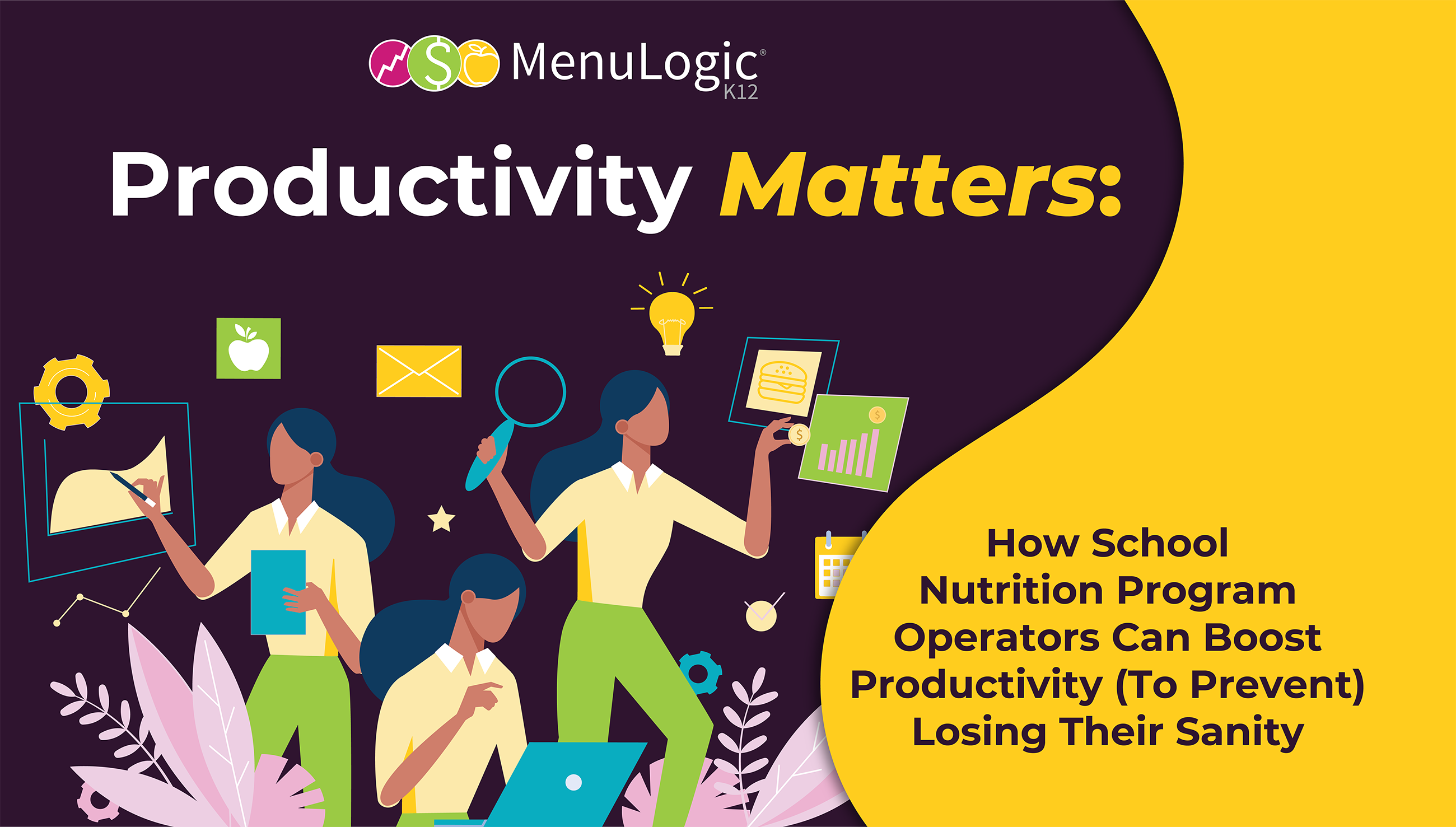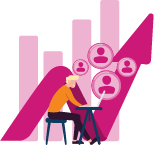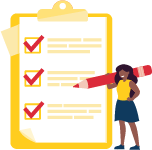
Is that KPI really your “KEY” to success?
We’ve all heard about KPI’s, or “Key Performance Indicators” in courses or trainings. But what exactly does that mean and what should these be used for? Google/Oxford defines “Key Performance Indicator” as: “a quantifiable measure used to evaluate the success of an organization, employee, etc. in meeting objectives for performance.”
KPI’s, more simply put, are measures of performance. Three of the most common KPIs that are usually associated with school nutrition or foodservice operations are “student meal participation,” “meals per labor hour,” and “cost of goods sold” (COGS).
These KPIs are sometimes accompanied by a chart of some form that allows you to compare your calculated value to the “norm,” an expectation, or a set of standards applied to all school nutrition programs.
Perhaps the idea that we can utilize these calculations to measure our district’s performance against a standard is an unrealistic and ineffective idea. Is the definition or the path to success the same across all school nutrition programs? No. Don’t get me wrong – there is a time and place for all three of these KPIs. It’s certainly better to know if your district’s own measure is within the realm of success as compared to others, than not knowing any information at all. But they most definitely are not the end-all, be-all and they can be a significant source of time-wasting trying to calculate something manually or via spreadsheets that isn’t all that useful.
Being purposeful about investing time in KPIs
With anything in life and work, ensuring an effort provides a valuable ROI on your time is extremely important. There is so much data generated by a school nutrition operation, where do you start?
The answer is simple. Start by asking yourself these two questions before spending any time tracking or calculating a KPI:
- Question 1: Am I going to change anything about my operation as a result of what I find out?
- Question 2: Will it provide enough details to tell me how to make that change?
Let’s apply those two questions to our example KPIs:

Understanding YOUR performance framework
Measuring the performance of a business or a school nutrition program using quantitative and objective data can be incredibly valuable. This exercise can help in understanding the strengths, weaknesses, and opportunities you face in order to meet the goals and aspirations that you have for your program and your customers.
Every district has its own unique challenges and also its own aspirations. It’s important for each program to identify it’s own goals and then use performance measures that help you directly achieve those goals. This can be described as your performance framework.
Measuring performance does not have to mean measuring it against other districts or other businesses. It can mean measuring schools within a district against your district’s standards or measuring menu cycle days and menu items against your internal standards. The key to finding the “Key Performance Indicators” most useful and worth your time is first to identify what it is you are trying to accomplish and choosing measures that support that mission.
Investing time in the right KPI
Let’s take a closer look at one of the KPI examples already discussed: Meals per Labor Hour. What is the intent or purpose? Meals Per Labor Hour gives a general look into productivity, and productivity is important for profitability. So what we are really trying to measure is how our labor costs affect profitability. But is this the right measure for the job?
Let’s break this goal of program profitability down further. There are many different directions to measure performance toward program profitability. But once you determine that labor costs are in line with your goal or program profitability, what else can you do? If labor, food/supply, and overhead represent all costs, perhaps a more effective approach might be to look at your menu and its impact on food/supply costs and total revenue.
Performance measures provide varying levels of detail. Some might be a high-level or “birds-eye” view of the program as a whole. These can be useful in understanding overall performance, but if that performance is not what you want it to be, you need more granular information that will allow you to actually make decisions to change that overall performance. Overall performance is the sum of many individual performance measures.

I can’t change the whole puzzle unless I understand the individual pieces that make up that puzzle.
Incorporating the right KPIs into your operation’s culture – how do you find the time?
This all might sound complicated, intimidating or downright exhausting. It doesn’t have to be. Businesses who rely on KPIs to measure against their performance framework do not have one person at the top (like a Director) doing it all alone. There must be participation by the whole team, not only involved with the effort to gather the data, but the effort to apply what is learned in order to grow together.
The only way this works is to utilize efficient methods of obtaining the data analysis for performance measures you choose to utilize. This information must come quickly and often. The idea is to spend little time gathering information so that more time can be spent strategizing and executing change from what you learned.
Where do we start?
The value and knowledge that objective information can provide to a team and a program is incredible. A culture that makes decisions based on facts rather than opinions can be so much more productive, effective, and in many cases, happier. Remove hurt feelings and awkward opinion-sharing and insert real information and productive discussions.
Picture this: sitting down for a menu meeting with stakeholders and starting that meeting with specific issues that have already been identified as not meeting your own performance measure standards. The same roasted vegetables at two schools are a (objectively) hit with students, while at the other schools they are a flop. Let’s discuss! Maybe the staff at the popular school found a better preparation method or altered the recipe. Perhaps at the other popular school the staff ran a promotion or taste test to get students to try it. Maybe at the flop schools, the staff only prepared a small amount because they thought students wouldn’t like them. Or maybe this is an excellent reason for a future school observation visit.
This is a much more productive discussion because the team started at a much higher level than “anything you want to change about the menu?”.
There is no single KPI that will be the “key” to success. The “key” to success is not only in identifying and using KPIs, but in identifying and using the right KPIs. It’s also in building a system for you and your team to use the information that is learned from the KPIs effectively. This can be accomplished by three steps:
Step 1: Identify your goals and aspirations for your program
Step 2: Determine how performance can be measured specifically to achieving those goals
Step 3: Create a team approach to gather, discuss, and apply what you learn
We don’t have the time to measure the performance of absolutely everything. Take a deep breath and like anything, take this one small step at a time.


















